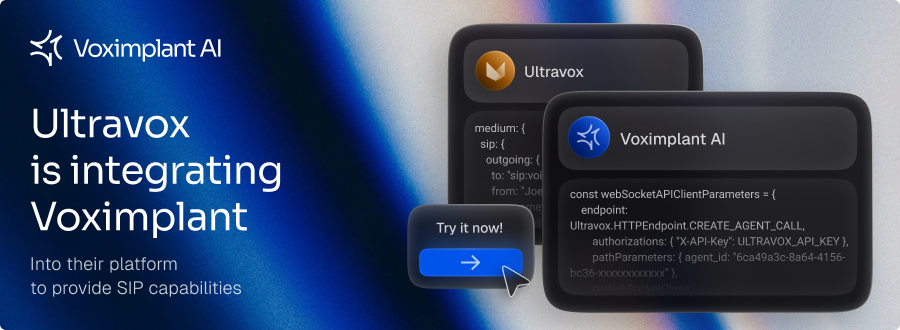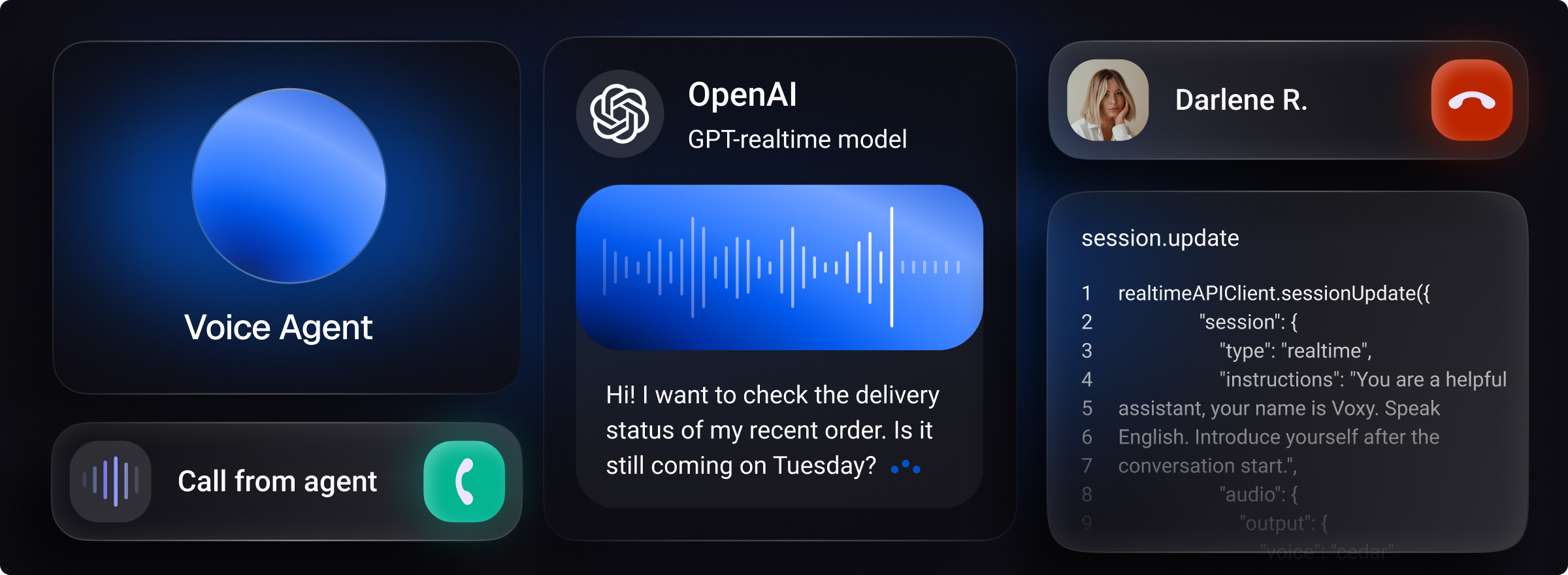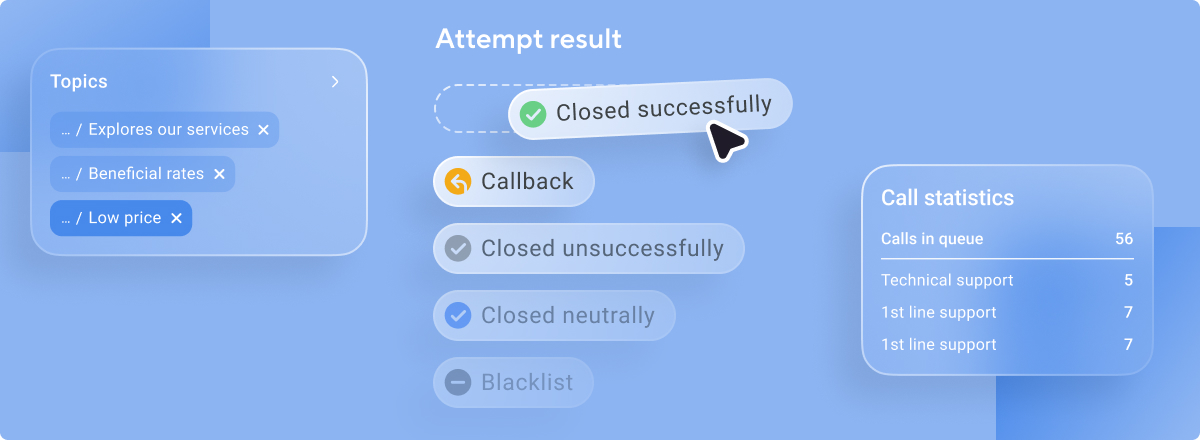Today Ultravox announced they are directly integrating Voximplant into their platform to provide SIP capabilities. The integration builds on Voximplant’s deep telephony and Voice AI tooling—including its Ultravox WebSocket API client and mature SIP trunking capabilities—to deliver low‑latency, reliable voice‑to‑voice experiences at scale. Ultravox’s production‑ready SIP powered by Voximplant is available today for inbound, outbound, and scheduled outbound calling.
Announcement highlights
- SIP support is critical to extend existing systems. SIP is a decades-old, extensively-used protocol, but it has many variations and vendor-specific flavors that often lead to interoperability issues.
- Ultravox can now interoperate with existing telephony infrastructure - carrier, contact center, and enterprise phone systems. Voximplant’s SIP toolset provides robust connectivity and interoperability options.
- No separate accounts or manual SIP setup. Voximplant is built into Ultravox; developers can simply select this option for inbound calls, outbound calls, and scheduled outbound calls.
- Built for modern Voice AI. Voximplant’s native client for Ultravox is designed to keep latency low and audio quality high, which is especially critical for speech‑to‑speech pipelines.
See below for additional technical details and the press release here.
Implementation details
- Ultravox voice stack: Ultravox took a first-principles approach to building a real-time voice AI infrastructure layer that can deliver fast, natural, and scalable voice agents —offering SDKs (JS, Flutter, Python, Android, iOS), a WebSocket protocol, and telephony support.
- Voximplant telephony & Voice AI connectors: Voximplant provides a serverless CPaaS foundation with SIP trunking, call control, and Voice AI integrations—including clients for Ultravox and other realtime Voice AI systems—for minimal audio latency and Enterprise‑grade reliability.
- Ultravox developer how-to: Ultravox developers can utilize the SIP integration by populating the `
medium.sip` object in the Create Agent Call API with incoming control via an allowlist or SIP registration and support for X-headers (SIP Guide). - Voximplant SIP support: Voximplant’s SIP support includes SIP trunking support via an allow list; SIP registration; UDP, TCP, or TLS transport; Encryption with SDES or DTLS keying, SIP over TLS for signaling, and IPSec VPN support; in-band DTMF, RFC 2833, and SIP INFO support; Custom SIP headers (X-headers); SIP REFER support; Adjustable authUser, callerId, outbound proxy and other parameters; and extensive codec support: G.722, G.722.1, G.722.2, Opus, G.711 (u-law and a-law), iLBC and more.
- Transparent integration: Ultravox is leveraging Voximplant’s management API and child account feature (API reference) to make the integration transparent to its users
Try it yourself
- Visit our new Voximplant AI homepage for our demo and more information on our Voice AI offerings: https://voximplant.ai
- Sign-up with Ultravox to use our capabilities there: https://app.ultravox.ai/
Resources
- Product overview of the Ultravox connector inside Voximplant - https://voximplant.com/products/ultravox-client
- Voximplant developer Ultravox getting started guide - https://voximplant.com/docs/voice-ai/ultravox
- Ultravox developers SIP Guide: https://docs.ultravox.ai/telephony/sip





